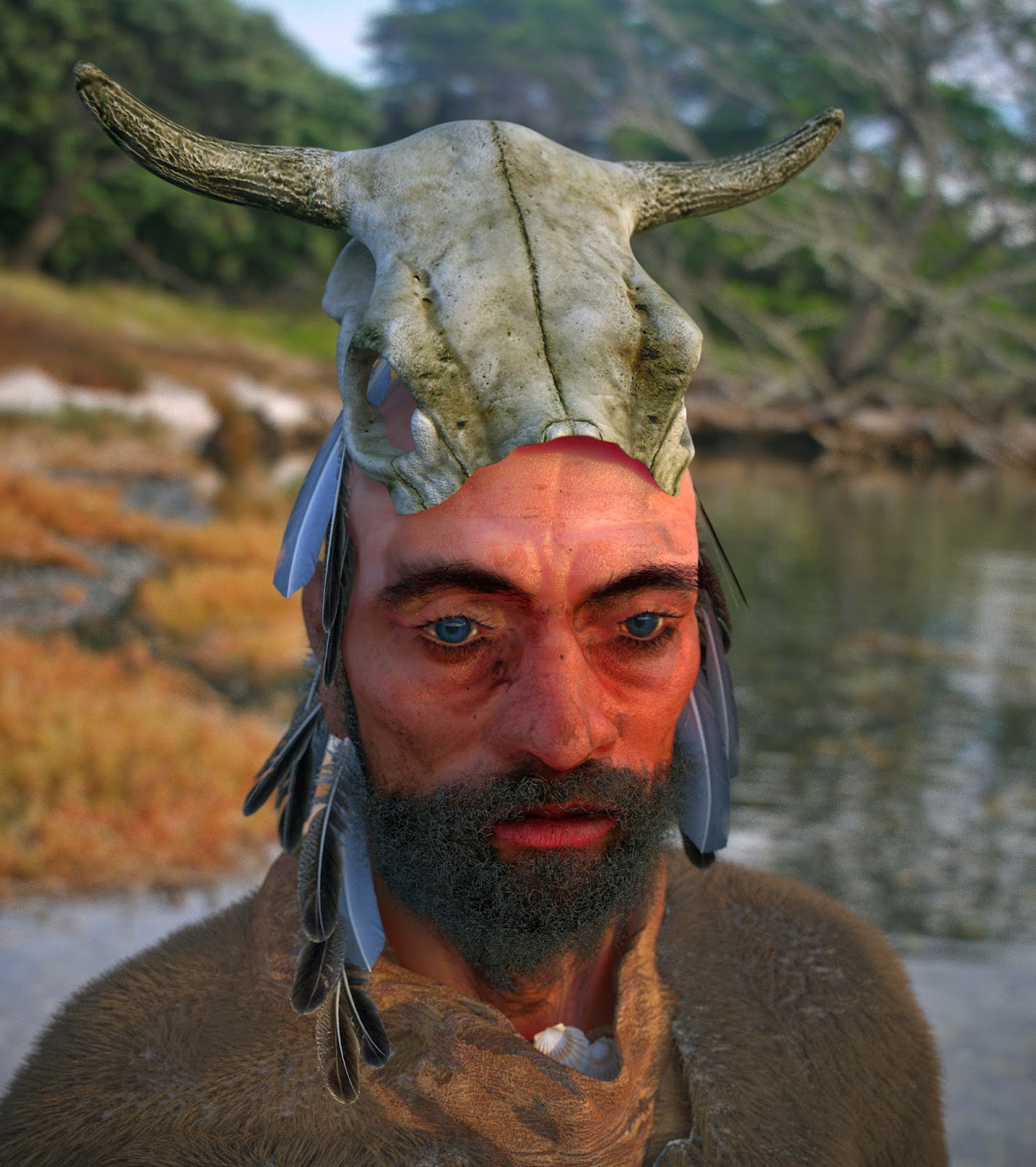 |
| Alice Watterson's evocative image of a Mesolithic man -- complete with ceremonial head-dress, decorative feathers and deer-skin suit. |
This wonderful illustration -- by Alice Watterson (of whom more below) -- shows a hunter gatherer. He's the sort of chap who would have arrived at Leighton Moss about 6,200 years ago -- at the very tail end of the Mesolithic era.
There isn't much doubt that he would have been expert at stalking ducks in the reed-beds -- although he'd probably have taken his head-gear off first!
Areas like Leighton Moss -- between the woods and the water --were so rich in food sources that they were a magnet for prehistoric folk. There were fish, eels and cockles to be had from the shore-line, deer and possibly elk from the woods. But the waterfowl and their eggs would have been a star attraction. The hunter-gatherers moved from place to place with the seasons. When setting up camp they would have used whatever building materials came to hand to construct their shelters. And what could be more convenient and effective than the reeds around the Moss? Cut, pegged and secured over a framework of hazel poles, the reeds could be used to fashion a remarkably cozy, tent-like hut. This photograph is of a reconstructed hunter-gatherer's hut at the Irish National Heritage Park in Waterford.
| A highly desirable water-front home, circa 4,200 BC. (Photo David Hawgood)
We know a good deal about hunter-gatherer activity on the Moss because Liverpool University archaeologists carried out an excavation in the mid 1960's. The team was led by Professor Terence Powell but the idea to dig on the Moss came from a young environmental scientist, Frank Oldfield. Frank tells the story of the excavation in the first chapter of my Leighton Moss history. And I'm very pleased to say that he and his wife, Mary, are hoping to be at the launch party for the book at Leighton Moss on Saturday September 13th.
It was the Liverpool team who discovered what may have been the remains of a timber causeway leading out on to the Moss. They also found a large number of small, sharp-edged stone tools. It was clear that a lot had been going on here during this period.
Despite all the physical evidence, there is no doubt that the skill of an artist and the mastery of modern computer imaging can help bring these stories to life.
Alice Watterson is a young archaeological illustrator currently working at Skara Brae in the Orkneys. Her image of a Mesolithic man was done as an exercise to improve her character modelling techniques. She was inspired, in part, by the Star Carr Mesolithic site in Yorkshire, but the character she created is not supposed to reflect any specific location. Alice spent a weekend struggling with arcane but clever computer software programmes rejoicing in names like Mudbox and Hair Farm. The result -- I find -- is a haunting image: a real face of a real person, who might have stalked the reed-beds of Leighton Moss 6,000 years ago -- or could just as easily be spotted in the supermarket car park...again, probably without the head-dress.
My thanks to Alice for allowing me to reproduce the image. You can find out more about the techniques she used on her blog.
|

No comments:
Post a Comment